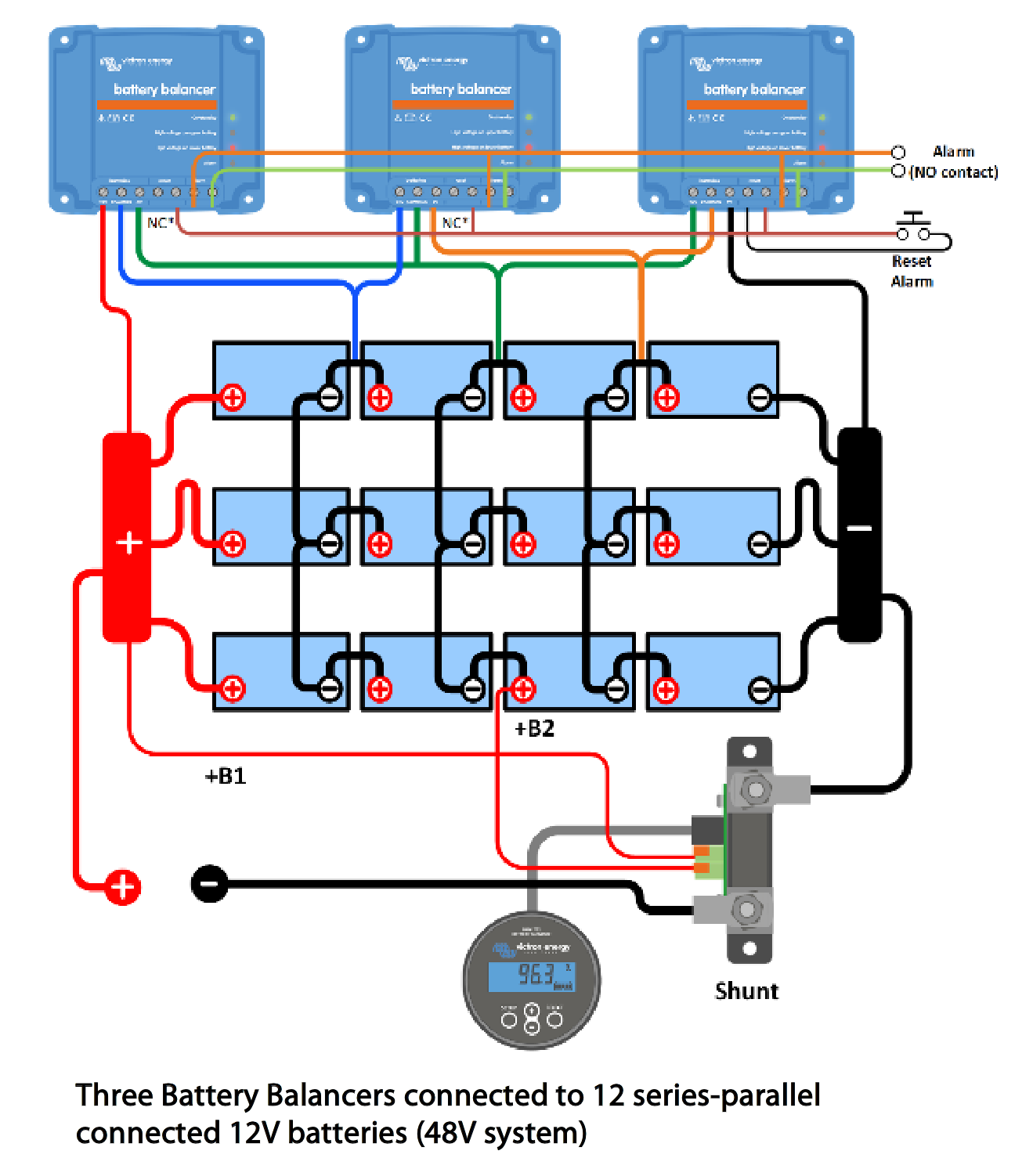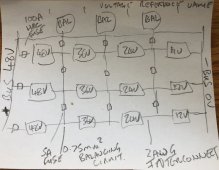TerryTtibbs
New Member
- Joined
- Mar 15, 2022
- Messages
- 56
This paragraph is in the VICTRON Documentation
In case of series-parallel connection, the midpoint
interconnecting cables must be sized to at least carry the current
that arises when one battery becomes open-circuited.
- In case of 2 parallel strings: cross section 50% of the series
interconnecting cables.
- In case of 3 parallel strings: cross section 33% of the series
interconnecting cables, etc.
There can't be a midpoint connection if there is only 1 string so the cable must be sized to at least carry the current is not applicable as their are no batteries in parallel.
The next part about 50% and 33% of the cross section of the Series connecting cables I am struggling to comprehend as the output Load of the bank could be drawn through any combination of the matrix of batteries with unmatching capacities in paralel if a battery has a complete open circuit and therfore a cable 33% of the load carrying capacity of the series connecting cables would possibly glow red before a fuse at the positive on each string could blow.
Or am I missing something?
To keep this post simple lets use some figures, so we are all on the same page when answering.
Batteries 12V 100Ah
Strings 4 x 12V 100Ah = 48V 100Ah per string
Combined parallel String = 3 x 48v 100Ah = 48V 300Ah Bank
Let's use the Wiring Diagram from the Victron Documentation

@smoothJoey https://diysolarforum.com/threads/lynx-shunt-wiring.37601/#post-475217
In case of series-parallel connection, the midpoint
interconnecting cables must be sized to at least carry the current
that arises when one battery becomes open-circuited.
- In case of 2 parallel strings: cross section 50% of the series
interconnecting cables.
- In case of 3 parallel strings: cross section 33% of the series
interconnecting cables, etc.
There can't be a midpoint connection if there is only 1 string so the cable must be sized to at least carry the current is not applicable as their are no batteries in parallel.
The next part about 50% and 33% of the cross section of the Series connecting cables I am struggling to comprehend as the output Load of the bank could be drawn through any combination of the matrix of batteries with unmatching capacities in paralel if a battery has a complete open circuit and therfore a cable 33% of the load carrying capacity of the series connecting cables would possibly glow red before a fuse at the positive on each string could blow.
Or am I missing something?
To keep this post simple lets use some figures, so we are all on the same page when answering.
Batteries 12V 100Ah
Strings 4 x 12V 100Ah = 48V 100Ah per string
Combined parallel String = 3 x 48v 100Ah = 48V 300Ah Bank
Let's use the Wiring Diagram from the Victron Documentation

@smoothJoey https://diysolarforum.com/threads/lynx-shunt-wiring.37601/#post-475217
Last edited:



